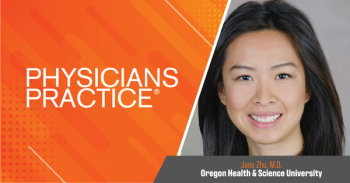
Patient, staff reductions adversely impacting practices weekly survey finds
90 percent of respondents reported dramatic patient reductions, as well as lack of testing capacity and experiences of illness and quarantine.
Nearly 90 percent of clinicians report dramatic patient-volume decreases with low cash flow and staff outages adversely impacting 47 percent and 42 percent of practices, respectively, according to a recent national survey.
According to
Practices in all 50 states range from rural and large health centers (i.e. more than three clinicians) to community health centers. One-third work in practices comprised of more than 50 percent Medicaid patients, 14 percent are in private practice, 13 percent in academic centers, 21 percent fee-for-service (FFS), 12 percent majority capitated and 20 percent non-capitated, states the survey.
Trending:
“All practices seem vulnerable, but independent practices are showing the most signs of financial struggle due to lack of cash flow. The FFS payment system inadequately resources primary care,” explains Gary LeRoy, M.D., president, American Academy of Family Physicians (AAFP), Leawood, Kan.
Robert McLean, MD, president of American College of Physicians, sees a “clear drop in patient visits. In-person visits are way down for social distance reasons. Many (practices) moved to remote visits for routine follow-up. Preventive-care visits got pushed our farther,” he adds.
Indeed, the survey says clinicians increasingly rely on virtual visits with 34 percent using video, 15 percent e-visits, 19 percent patient portals, and 48 percent phone visits.
“Family physicians have seen an increase in telehealth visits due to waivers from the Centers for Medicare and Medicaid Services. This has allowed primary care to adopt this technology quickly. However, 65 percent have patients who cannot use virtual health due to no computer or internet access. Due to this, most [clinicians] conduct visits by phone.
“Additionally, payment is slow for telehealth. Ten percent have not received payment for video or e-based care. Sixteen percent have not received payment for phone-based care,” says LeRoy, who notes that practice response to the pandemic differs by location and patient need.
“Many have taken precautions to postpone non-essential care. Family physicians and their care teams are essential workers. There are variations from 100-percent virtual visits to well visits in the morning and sick visits in the afternoon. Or, drive-up visits where the patient does not leave the car.”
“Physicians are quite busy whether it is video or telephone visits or other types of management,” McLean says, “which include communicating with patient's via e-mail through electronic health record patient portals, managing refills of medications, reviewing test results, etc. Many aspects of managing information around patient's care has not significantly changed.”
Read More:
LeRoy says “many physicians prioritize routine chronic care to prevent complications and trips to the emergency room and hospital. However, the financial impact and availability of clinical workforce has an impact on how they continue care with independent practices much more vulnerable.”
The survey notes that staff outages, caused by illness or quarantine, effected 36 percent of clinicians and 35 percent of nursing and 31 percent of front desk staff. Low staff levels could cause 3 percent of primary practices to close, states the survey, which finds 53 percent of practices lack personal protective equipment (PPE) and 58 percent rely on used or homemade PPE.
“As much of PPE has been directed toward hospital and other inpatient facilities, there has generally been significantly less available for ambulatory practice settings,” says McLean who adds “With greater concern over virtually any respiratory infection, even very mild symptoms now require staff to stay at home and not come in to work for fear they might have early symptoms of COVID.
“Many must have a COVID test, if available, and stay out until results are known, which may take several more days. So in some cases, concerns are starting to cause limitations of available staff to work in offices,” he says.
Newsletter
Optimize your practice with the Physicians Practice newsletter, offering management pearls, leadership tips, and business strategies tailored for practice administrators and physicians of any specialty.








